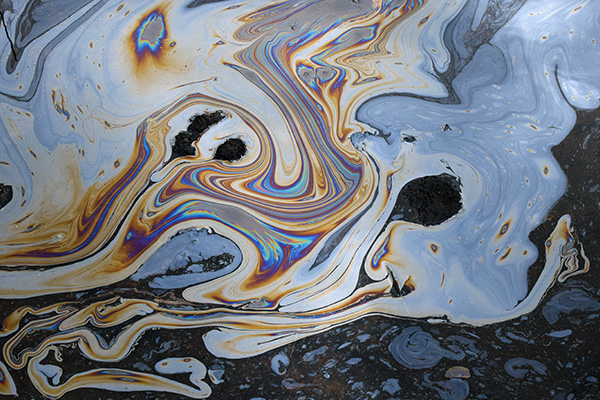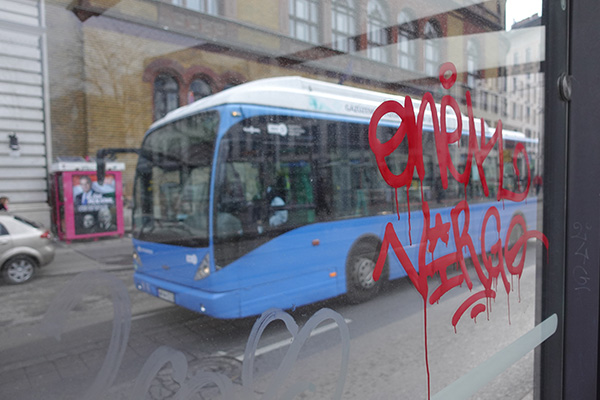Plastic surfaces and advertising hoardings are an attractive target for graffiti as they are normally smooth and very receptive to paints, inks and other materials such as shoe polish and lipstick.
The inks and paints bond strongly with the surface and provide the ‘artist’ with an ideal canvas to show off their work, however it also makes getting these dyes off a plastic surface more difficult.
Plastics come in many different forms and vary in opacity and also hardness. Some are very rigid and hard wearing and are used for applications such as garden fences and are more of a composite material, others are designed for their flexibility and transparency to mould to a certain shape or provide clear protection and are therefore much softer.
Plastics are also affected by their exposure to the weather and the exposure to extreme heat and cold during summer and winter months can increase their fragility and also the transparency and the plastic starts to degrade and softens and high exposure to UV light can see a yellowing of the plastic.
This means that these plastics are what we would call a sensitive surface and can be easily damaged not just by the applications of inks and dyes in paint, marker pens, etc but also in any solution used to try and clean them.
What chemicals dissolve paints and inks?
Traditionally harsh chemicals or solvents were a very good method of cleaning graffiti from plastic surfaces. Chemicals such as NMP (N-Methyl-2-pyrrolidone) and NEP (N -ethyl-2-pyrrolidone) have been used traditionally but these are very aggressive. It is also classified as carcinogenic and reprotoxic and is a highly dangerous compounds to handle and apply by spray, and therefore should be avoided where possible!
Another chemical that can dissolves inks and dyes are Terpenes, and a common one is D-limonene which is a colourless aliphatic hydrocarbon and although this is technically organic, it is also highly dangerous to the environment and is labelled as ‘Dead Fish, Dead Tree’ and poses a significant risk
Other alcohol-based solutions can also be used such as Turpentine or White spirits are also an effective cleaner of paints and are used for cleaning paint from brushes. Whilst being a proven cleaner of paints they are best used in a closed container as they will evaporate very quickly which reduces contact time with the paint and are therefore mainly used for soaking items such as paint brushes, and they are also very volatile solvents and highly flammable.
How can plastics be damaged by the cleaning process of removing inks and paint from plastic?
Very hard plastics and polyurethanes will be quite resilient to harsh chemicals, but they may suffer from any colour bases being faded.
However, the most commonly used plastics used in externally for advertising hoardings or decorative use are soft and flexible plastics that are moulded or bent into a specific shape. These tends to be Polycarbonates, Acrylics and Perspex.
These are highly transparent and have a soft surface, and the structure may be put under stress, especially if moulded or bent to fit a certain shape such as a curve. The combination of a ‘stressed’ plastic and a soft surface means that the application of a harsh aggressive chemical will effectively burn or melt the surface of the plastic and can either physically damage the surface or turn it into a milky and opaque surface, making any advertising material hidden or obscured and requiring the plastic to be replaced at a potentially high cost.
What is the safest way to remove graffiti from a plastic surface?
The key to success is to use a product that is Tough on Graffiti, but kind on plastic.
The solution used must be aggressive in terms of dissolving any paints or dye and being powerful enough to break through the surface skin of the paint, ink or dye and access the inner structure to dissolve to bonds of the ink, but not the surface of the plastic.
EN685 is a Plastic Safe, Non-Hazardous Graffiti Remover designed for this application and is the product of choice for the worlds largest outdoor advertising company to keep all their advertising hoarding clean and clear of graffiti.
A blend of environmentally and user-friendly components combine to work in seconds by breaking down the outer skin of the paint and then dissolving the structure.
As EN685 is classified as Non-Hazardous it is safe to apply by spray or cloth, however sensible precautions when using any cleaning products such as gloves and eye protection should be worn as good practice!
Simply spray and leave EN685 Plastic Safe Graffiti remover on the surface for 5-10 seconds and then agitate the surface with a cloth or even a soft scouring pad such as those used for cleaning bathrooms, re-apply EN685 and then leave for 5-10 seconds and wipe clean.
We recommend rinsing the surface with a normal surface cleaner to remove any dissolved ink residues from the surface.



